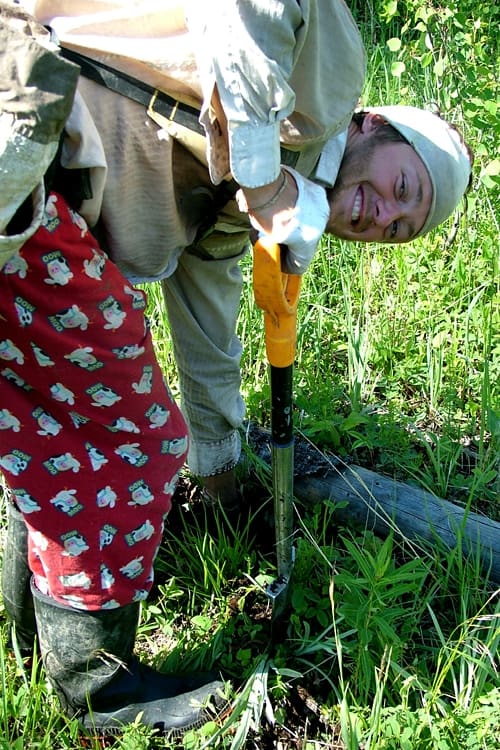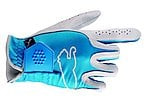You can get quite creative here as well. One planter showed me a video how, in soft sand, he didn’t even need to close his hole because the sand just fell into the hole naturally.
In a particular terrain, I might push the handle far forward to build up a mound in front of it. By this point I already have the toe of my foot suspended above the mound. Once I have my tree in the ground and have pulled out the shovel, I step forward towards my next spot, stepping on the uplifted mound and neatly closing the hole in the process.
Sometimes there are many roots from the undergrowth and it is difficult to close a hole properly (there should be no air pockets around the plug and the tree should be tight enough in the ground – but the strictness level depends on the checker, so make sure you never do more work than you have to), in which case I might find it useful to reinsert the blade into the ground but a few inches before the hole (closer to you). You then pull the handle towards you or give it a little twist. If your blade is in the ground at only half depth, this action pushes the soil towards the hole and fills it in.
![]()

One planter talked about jabbing the ground a few inches behind the tree (farther away from you) as he walked towards his next spot, the action of which would cause the hole to cave in on itself. Just make sure you are confident enough and have good aim, otherwise you might slice the root in half or not fill in the hole properly.
Other times the soil is soft enough that you can just give it a little swirl with your fingers and fill it with your hand only.
Or, as you start moving towards your next spot, put the blade a few inches behind the tree, give the blade a little twist and use the shovel as a sort of cane as you get up.
Or you can slam the ground with your heel in before the tree, although I find this approach expends unwanted excess energy. It does nevertheless prove useful in certain microspot situations.
Many times I’ll poke around the hole with the blade, twisting it and pushing dirt towards the hole while I make a sweep with my left fingers (my tree hand – my right hand reserved for the shovel, since I am right handed). Sort of like gardening work. Keep in mind that the plug does not have to be super tight in the ground. Find the limits of tolerence by your foreman and/or checker and always aim for the path of least resistance.
As mentioned previously, sometimes I’ll spin the shovel in my hand and use the handle to pat down the soil when it is a hard-to-reach tight spot.

Next: |
We are a family operation managing private custom boat tours in the beautiful Palawan area, and are happy to help travelers with their plans through the country, having traveled a lot of it ourselves and planning to visit it all. The pages in this section concern when I was treeplanting in Canada over eight summers.